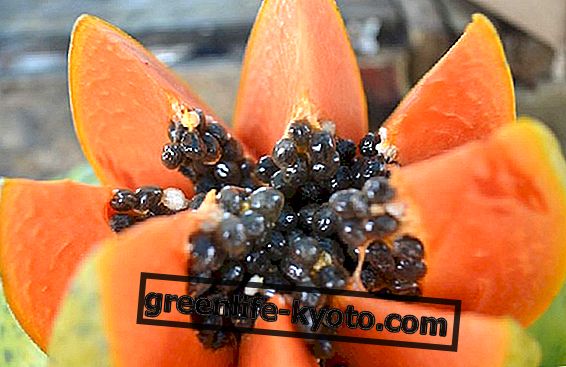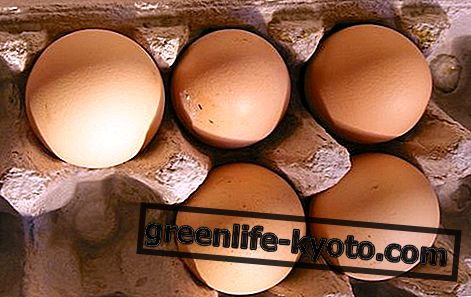
Azuki beans are beans that come from the eastern lands of China and Japan. They are also known as asuki, adsuki or red beans.
In ancient China the azuki was considered "the king of beans" for its nutritional and beneficial properties for the body.
The scientific name of the azuki is Phaseolus angularis or even Vigna angularis and belongs to the legume family like all beans, peas, chickpeas, soybeans and other legumes.
The azuki is very similar to the bean but has smaller dimensions and the shape is more rounded instead of kidney-shaped. The color of the azuki is dark red with a thin white line that crosses the middle of the seed and stains one end in white.
The flavor of the azuki is quite sweet and recalls the taste of walnuts or hazelnuts. In the kitchen they find space both as dessert recipes such as desserts, mousses and sweet soups but also as creams or savory side dishes.
They are also used to prepare drinks and even fresh use is interesting for these legumes even if they are usually used more often.
Cultivation of the azuki bean
The cultivation of azuki beans dates back to before 1000 BC in the lands of China and Korea and then spread to the Near East as far as Japan. Currently azuki are cultivated a little all over the world and it is easy to grow them also in Europe and in Italy.
Azuki are known by the Italian population as a result of the diffusion of the macrobiotic diet and the typical natural diet that comes from the East.
Usually we meet the name of the azuki when we talk about the sprouts. In fact these red beans are among the most common seeds that are used for the production of sprouts for food purposes.
Instead, cultivation in open fields in Italy is less known and there are few examples of farms that have introduced azuki in the cultivation choices of their vegetables.
Cultivation: for sprouts or for pods
To grow azuki we will need the seeds that we will be able to buy in some specialized agrarian but much more easily we will find them in organic food stores or in herbal medicine because they are sold to produce the sprouts.
Once we have the seeds it will be necessary to leave them in the water for a few hours so that it can penetrate the seeds and start the sprouting process. At this point we will have to decide whether to continue for a cultivation on the ground or to prepare them as sprouts to eat.
The sprouts are cultivated by putting the rehydrated seeds in a container with the holes that is called the sprout. Subsequently we will have to keep them wet several times a day until the sprout is introduced and for a few days later when the first leaves will be larger and begin to take on the color towards the green.
The sprouting of the azuki is very easy and it is only necessary to remember to put water and therefore to keep them wet. When the shoots have grown at least 3 centimeters they can be used fresh at the moment or kept in the fridge for a maximum of 3 or 4 days.
Fresh use of sprouts retains all the nutritional and beneficial properties of these azuki but there are also many recipes for cooked azuki sprouts.
The cultivation in the open field is practically identical to their brother bean in fact it is enough to put the seeds in the soil and let the plant grow, which is a herbaceous shrub up to a height of 35 to 100 centimeters.
The sowing can be done in late spring between April and May in holes nearby about 60 centimeters from each other. After a month the plant will be the final size and flowering will begin with the subsequent formation of the pods that can be harvested in late summer.
Watering is necessary for the first period but generally it is sufficient to give water when the soil is dry.
The average optimal growth temperature is between 15 and 28 degrees . They do not have great needs with respect to the soil, in fact being legumes they are vegetables that bring nitrogen into the soil and therefore help to fertilize naturally.
The collection of azuki seeds
The azuki collection takes place in a manner very similar to the beans in fact when the pod measures about 10 centimeters and has reached maturity it can be detached manually from the plant to then be shelled to obtain the internal seeds which are the azuki.
We can use fresh azuki directly or put them to dry to keep them during the year.
To do this it will be sufficient to let them dry in an airy environment and then put them in a closed container and away from light and heat.
These dried azuki seeds can be used for cooking recipes, natural remedies or shampoo products but also as seeds to be planted the following season to get new azuki plants.
Properties and benefits of azuki
Azuki contain few calories and many nutrients like vitamin C and B vitamins but also many mineral salts like calcium, sodium, potassium, iron, magnesium, manganese and zinc.
They are rich in dietary fiber that helps in intestinal transit and fight constipation and constipation. The part of vegetable fats is very small and also helps circulation and lower cholesterol levels.
In their composition we also find a good protein complex as well as in all the legumes of this family.
Azuki have specific properties such as depuratives and diuretics which therefore serve to help the entire urinary tract and in particular against any problems with bladder and kidney infections.













